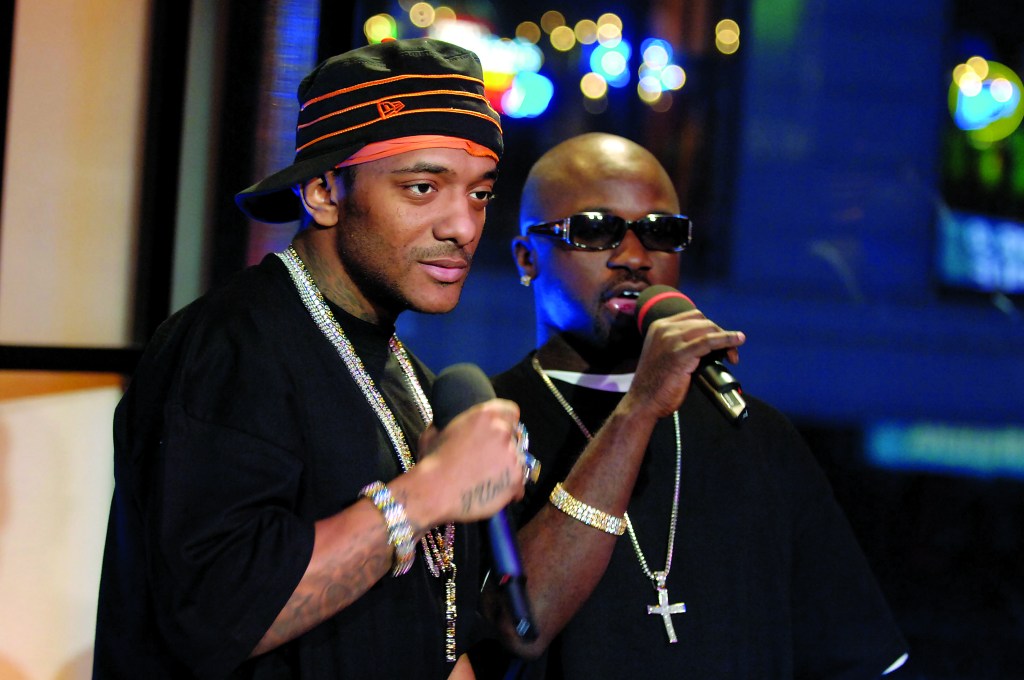Despite a pervasive, graffiti-caked climate of fear at LeFrak City, Prodigy did enjoy certain freedoms thanks to his coming of age, however bleak. He “was a young kid, just at the age of being able to hang out outside at night. I started going to house parties, drinking, hanging with my friends, listening to hip-hop. And on one of my birthdays, my mother put me up with a turntable and some DJ equipment—a couple of pieces—and I started doing my thing, doing mix tapes.”
While Prodigy cut his hip-hop teeth, other LeFrak City youths succumbed to a cycle of despair. In 1986, Rogean Williams, 15, was shot in the right temple in his family’s apartment. He was declared brain-dead as police mounted a search for two teenage girls suspected of the crime.
When asked if a sense of fraternity bound the development’s nascent M.C.s together and maybe kept them out of harm’s way, Prodigy said that mixing for him was a largely solitary pursuit and that his incompetence when it came to dealing was what probably spared him a harsher fate.
“I didn’t really know too many people who rapped,” he said, adding that he wasn’t aware of of Akinyele, a slightly older hip-hopper (of dubious “Put It in Your Mouth” fame) also associated with LeFrak City. Besides, Prodigy’s turntable didn’t totally distract him from the darker corners of the complex.
“I started high school in 1990, and that first year is when I got caught selling crack,” he said. “My mother was, like, ‘We’re out of here.’ I was getting into too much trouble. She moved to Jersey City. I ended up leaving my crib, dropping out of school and moving to [Long Island City’s] Queensbridge,” the largest public housing project in North America.
The Johnsons left a dangerous environment, but one that had already recovered from its nadir during the ’70s fiscal crisis and proceeding crack era. (During this time, in 1975, Richard LeFrak had taken over the company presidency from his father, who remained as chairman.) In 1989, LeFrak City was reported to be 99 percent rented, with a 427-person, up-to-two-year waiting list. Meanwhile, LeFrak proceeded with the $10 billion Newport mixed-use project in Jersey City, which Samuel had announced in 1985.
Both LeFrak City and Mobb Deep entered the 1990s poised for a reversal of fortune. Jewish émigrés from the former Soviet bloc and African Muslim immigrants simultaneously flooded LeFrak City throughout the first half of the decade. By 1996, these groups constituted about one-fifth of LeFrak City s 25,000 residents. This lent the complex stability and moved it further away from any early suburban aspirations toward a microcosm of the borough it had helped develop, which came to symbolize New York’s diversity as Manhattan and Brooklyn quickly gentrified.
Meanwhile, in Queensbridge, Prodigy met Kejuan Muchita (alias Havoc) and (along with Nas, who was from the same neighborhood, and Brooklyn’s Notorious B.I.G.) planted the East Coast seeds of gangsta rap, the hard-core genre already flourishing in California. In 1993, the noted 4th & B’way imprint, a hip-hop subsidiary of Island Records, released the duo’s Juvenile Hell. That album underwhelmed but set the framework for 1995’s The Infamous, which won critical acclaim, featured guests Nas, Raekwon and Ghostface Killah and went gold.
As the economies of New York and major label rap flourished in the mid-to-late ’90s, it seemed as though LeFrak City and Prodigy were delivering on what the rapper described as the development’s abiding ethos. “LeFrak wasn’t really about having beef with other ’hoods. It was about money,” he said. “Everyone was out there getting bread. That was really the reputation of Lefrak—getting money, selling drugs. That’s what I know it for.”
To outsiders, though, the development continued to be known for its improbably harmonious religious diversity. One Times article from 1996 begins like a walk-into-a-bar joke by describing “a rabbi from Tashkent, two Uzbeki Jews, a Catholic businessman, a black American who converted to Islam, a Guinean Muslim and two Argentines” talking in the complex. Still, shootings and robberies made for less utopian headlines.
Violence remained the byword in popular hip-hop as Mobb Deep followed up The Infamous with Hell on Earth (1996)—noteworthy for its 2Pac “diss track” “Drop a Gem on ’Em”—and Murda Muzik (1999), which debuted at No. 3 on the Billboard charts and went platinum with more than 1 million in sales. Murda Muzik represented a commercial and critical high watermark for the duo, despite subsequent rap battles with Jay Z and others.
Mobb Deep continued to record as gangsta rap’s heyday clearly receded. In its place came the ostentatious bling era, followed by the genre’s near-total assimilation into the Top 40 mainstream. It was a musical rags-to-riches tale that made multimillionaires of the hip-hoppers most comfortable with selling out.
Yet Prodigy’s problems persisted, just as they did at the rejuvenated LeFrak City. In 2003—the year Samuel LeFrak died at 85—he and eight members of his entourage were arrested after police officers found marijuana, crack cocaine and an illegal handgun in two vans they’d parked near an upstate concert venue. Three years later, he and producer The Alchemist were pulled over after making an illegal U-turn. Cops found a handgun in a compartment of the car. Prodigy began a three-year jail term in early 2008.
Since his release, Prodigy has released two solo LPs, H.N.I.C. 3 and The Bumpy Johnson Album. He and Havoc say they’re wrapping up production on Mobb Deep’s eponymous eighth studio album.
I asked Prodigy if, especially in light of his time served, which coincided with the banking system collapse, he had any resentment toward the masters of the universe who emerged from that crisis scot-free. He had no ill will toward the plutocracy, including members of the LeFrak family. He had even exchanged numbers with Karen LeFrak, Richard’s wife, during that long flight to Australia. (Representatives from LeFrak, as the company is now known, declined to comment on this story.)




